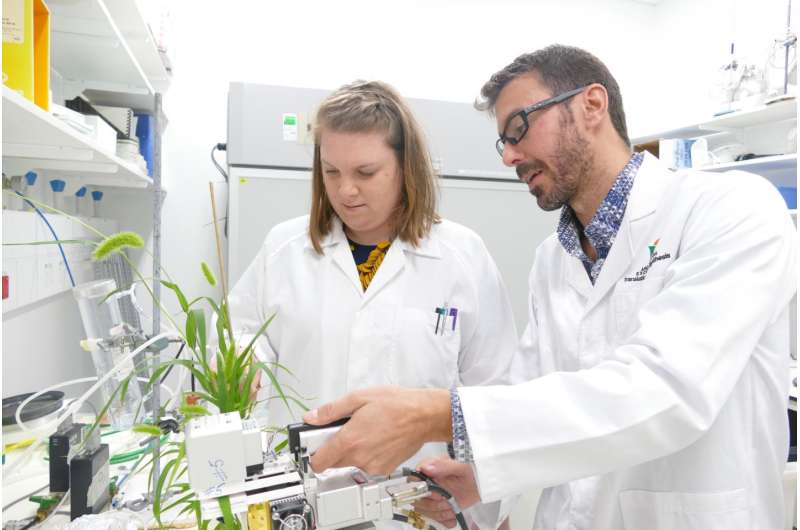Research to help develop next-generation food crops

Research led by The Australian National University (ANU) is helping to develop food crops with bigger yields and greater ability to cope with drought compared with today's plants.
Crops such as sorghum and millet produce much more yield and are better at resisting drought and other extreme conditions compared to wheat and rice, and this research will help explain why by studying the role of a key enzyme in the process.
One of the lead researchers Dr Hugo Alonso-Cantabrana said sorghum, sugarcane, millet and maize used a form of photosynthesis called C4 that made them more efficient at transforming carbon dioxide, light and water into sugars.
"They do this by taking up carbon dioxide from the air and concentrating it in specialised cells deep in the leaf," said Dr Alsonso-Cantabrana from the Research School of Biology and the ARC Centre of Excellence for Translational Photosynthesis at ANU.
Co-researcher Hannah Osborn, an ANU PhD student, said wheat and rice, known as C3 plants, used the oldest form of photosynthesis, while plants using C4 photosynthesis had an advantage in conditions with high temperatures and low rainfall.
"C4 plants can capture carbon dioxide from the air while losing less water from their leaves, but little is known about what determines the efficiency of this process," said Ms Osborn, from the ARC Centre of Excellence for Translational Photosynthesis and the Research School of Biology at ANU.
To investigate the process, the team studied the role of carbonic anhydrase (CA), the first enzyme that carbon dioxide encounters in the leaf of a model C4 plant Setaria viridis, which is also known as green millet.
"This enzyme is vital for C4 photosynthesis as it helps carbon dioxide from the air to dissolve quickly into the liquid of the cell," Ms Osborn said.
"This is the first time that we have been able to transform this model C4 plant to have less of the CA enzyme and look at the effects on photosynthesis and water loss.
"We think that under adverse conditions such as drought or high temperatures, having a lot of this enzyme could be advantageous for the plant."
The team will continue the research to test the role of the enzyme under extreme environmental conditions.
More information: Hannah L. Osborn et al, Effects of reduced carbonic anhydrase activity on COassimilation rates in: a transgenic analysis, Journal of Experimental Botany (2016). DOI: 10.1093/jxb/erw357
Provided by Australian National University



















